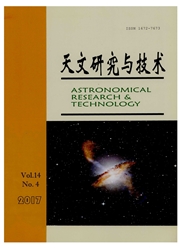

 中文摘要:
中文摘要:
射电天文台址内仪器设备众多,电磁环境复杂,电磁兼容设计、屏蔽设计及辐射评估均依赖基于测试的数据处理与分析,而程序化是提高测试及数据分析效率的唯一手段。浅析了电磁辐射评估系统的硬件组成、评估流程、软件开发目标及关键技术点;基于软件需求分析及评估过程中的数据传递、数据处理及数据存储,给出了评估软件的设计流程图、数据流图及二维差值算法流程图;分析了电磁辐射评估过程中主要数据特征,开发了基于数据源、数据库的数据存储及管理模块。其次,基于Microsoft Visual Studio 2010开发平台,通过大量的程序调试与界面优化,完成了电磁辐射评估软件开发,能够对仪器设备辐射特性进行快速测试、分析与评估,为射电天文台址电磁兼容性改造和射电望远镜系统兼容性设计提供重要的参考依据。
 英文摘要:
英文摘要:
Because of numerous instruments and equipment existing in the radio telescope system and observatory site, the electromagnetic environment becomes complicated and astronomical observations become difficult. Radio telescopes are extremely sensitive systems, and electromagnetic emission from electronic equipment in their neighborhood must be tightly controlled. The Electro-Magnetic Compatibility (EMC) is concerned with the design and operation of equipment in such a way : they are immune to the Electro-Magnetic Interference (EMI) while at the same time they do not interfere with other equipment in the same environment. The electromagnetic compatibility design, shielding design and emission assessments are all dependent on the data processing and analysis. Therefore the routinization is the only way to improve the test efficiency and the data analysis. Firstly, the measurement system, the evaluation process, goals and the key technic problems of the software design are analyzed in this paper. Based on the data transfer properties, processing and data storage in the software, the flow chart, data flow diagram and the key interpolation algorithm flow chart of the evaluation software are given. The main data characteristics and the date storage methods of the evaluation processing are also analyzed, then the data storage and management module based on the data source and the database is developed. Secondly, based on the Microsoft Visual Studio 2010 development platform, the electromagnetic radiation evaluation software is developed through lots of program debugging and optimization, which is capable for the rapid test, the analysis and the evaluation of the equipment radiation characteristics, which provides an important reference for the electromagnetic compatibility designing for the radio astronomy observatory. Meanwhile, with the software used, the repeated and tedious testing process and the data process also become easy, greatly improving the data reliability and efficiency for the scientific research.
 同期刊论文项目
同期刊论文项目
 同项目期刊论文
同项目期刊论文
 期刊信息
期刊信息
